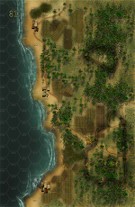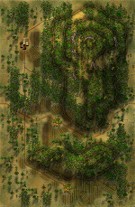| Author |
JayTownsend
|
| Method |
Solo |
| Victor |
United States |
| Play Date |
2020-12-21 |
| Language |
English |
| Scenario |
Leyt023
|
Leyte 1944, Scenario Twenty-Three: West of Carigara
One little but important piece of missed errata: Map 81 should be configure with the ocean facing north or the number 81 located in the top right-hand corner.
A good, fun scenario to play and it shows you why PG really shines in the Pacific Threat. The Americans are under a lot of pressure to try and achieve three objective in 20 turns. The Japanese have to figure out how to best defend against the American player achieving or not, these victory levels. Kind of an interesting puzzle to solve for both sides. The Terrain is usually always beneficial to the defender and the Americans are not very mobile either with only one LVT vehicle unit. The Japanese decide to defend the north-south road and spread out their support weapons across the two maps.
At first it looked pretty bad for the Americans and the Japanese rolled very well inflicting three step losses very early but once the Americans, which were divided somewhat into two groups recovered, they were able to put a good offensive together and only lost two more steps through the rest of the game and one Major as well. They were able to eliminate 3 out of 4 of the Japanese support weapons and had more than a two to one advantage in steps losses but were not able to clear the whole north-south road. They needed maybe three more turns, as the Japanese still had units on the far southern section of the road including a 37mm AA Gun. So the Japanese lost 20 steps and 4 leaders, while the Americans lost 5 steps and one leader achieving 2 victory objectives and a Minor American Victory.
|


 Leyt022
Leyt022 


























